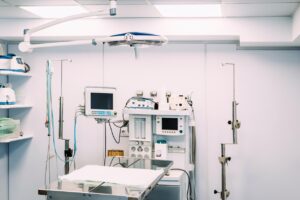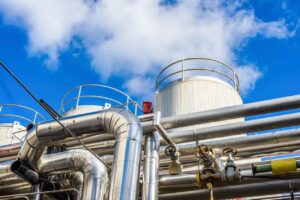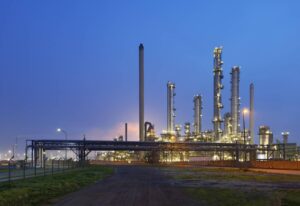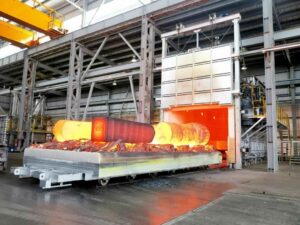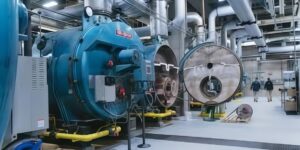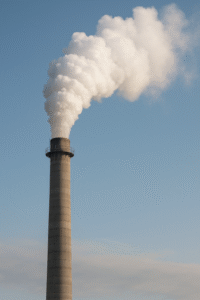A gas analyzer is an instrument used to detect, analyze and measure gas composition and concentration. They play an increasingly important role in the medical field, providing doctors, researchers, and healthcare with critical information that helps diagnose disease, monitor patients’ physiological conditions, and improve the effectiveness of medical treatments. This article will explore the wide range of applications of gas analyzers in the medical field and their critical role in improving the quality of care and patient health.

Application of CH4 Gas Analyzer in Medical Diagnosis
Methane is a common gas that plays an important role in medical diagnostics. CH4 gas analyzers are used to measure methane levels in the body, which is important for diagnosing and monitoring some intestinal diseases. Here are some applications of CH4 gas analyzers in medical diagnostics:
- Diagnosis of intestinal diseases
CH4 gas analyzers are commonly used to help doctors diagnose and monitor intestinal disorders such as irritable bowel syndrome (IBS) and small bowel syndrome. By measuring methane levels in a patient’s breath, doctors can determine whether bacterial overgrowth or other intestinal problems are present. This helps create a more accurate treatment plan and reduce the patient’s symptoms.

- Testing for nutrient absorption problems
CH4 gas analyzers can also be used to detect whether patients have nutritional absorption problems. High levels of methane emissions may be linked to absorption problems with certain nutrients, so this analysis could guide doctors in developing personalized dietary plans to improve patients’ health.
- Monitoring of intestinal disease treatment
For patients who have been diagnosed with intestinal disease, a CH4 gas analyzer can be used to monitor the effectiveness of treatment. By regularly testing methane levels, doctors can learn if treatment is working and if adjustments to medications or diet plans are needed.
Application of CO Gas Analyzer in Medical Treatment
Carbon monoxide (CO) is a toxic gas, but in the medical field, CO gas analyzers are used to monitor carbon monoxide poisoning and respiratory problems. The following are applications of CO gas analyzers in medical applications:
- Diagnosis of carbon monoxide poisoning
Carbon monoxide is a colorless, tasteless, and odorless gas. Poisoning can occur when people are exposed to high levels of carbon monoxide. A CO gas analyzer can measure carbon monoxide levels in a patient’s exhaled breath to diagnose poisoning. This is crucial for taking timely measures to treat patients.

- Monitoring for respiratory problems
CO gas analyzers can also be used to monitor patients for respiratory problems. By measuring carbon monoxide levels in exhaled breath, doctors can assess a patient’s lung function and respiratory health. This is very helpful in diagnosing conditions such as chronic obstructive pulmonary disease (COPD).
- Breath carbon monoxide test
Breath carbon monoxide testing is a non-invasive test that can be used to assess a patient’s carbon monoxide poisoning risk and respiratory health. This test is commonly used to screen smokers and patients for exposure to carbon monoxide pollution.
Applications of other types of gas analyzers in the medical field
In addition to CH4 and CO gas analyzers, there are many other types of gas analyzers that play a key role in the medical field. These instruments can detect and measure a variety of gases, helping to diagnose disease, monitor patient health, and improve medical treatments. Here are some other types of gas analyzers used in the medical field:
1. Oxygen concentration analyzer
An oxygen analyzer is used to measure the concentration of oxygen in a patient’s blood. This is important for monitoring patients with breathing difficulties, lung disease, or cardiovascular problems. Oxygen concentration analyzers can be used at emergency sites, operating rooms and intensive care units to ensure that patients receive adequate oxygen supply.
2. CO2 (carbon dioxide) gas analyzer
A CO2 gas analyzer is used to measure the concentration of carbon dioxide in exhaled breath. This is useful during anesthesia procedures, respiratory monitoring and care of critically ill patients. By monitoring CO2 levels, doctors can assess the patient’s breathing and circulation, as well as the depth of anesthesia.
3. NO (nitric oxide) gas analyzer
Nitric oxide is an important biomolecule that is essential for vasodilation and regulation of the immune system. NO gas analyzers are used to measure nitric oxide levels in exhaled breath and can help diagnose and monitor patients with respiratory diseases such as asthma and chronic obstructive pulmonary disease (COPD).
4. N2O (laughing gas) gas analyzer
Laughing gas is commonly used in anesthetic surgeries but can be harmful when used in excess. N2O gas analyzers can be used to monitor the concentration of laughing gas when patients are undergoing anesthesia to ensure that it is used within a safe range.
5. H2S (hydrogen sulfide) gas analyzer
Hydrogen sulfide is a toxic gas but is also an important component of some biological processes. H2S gas analyzers are used to monitor hydrogen sulfide levels in patients, helping to diagnose and treat diseases related to hydrogen sulfide metabolism.
The use of these gas analyzers provides the medical industry with additional tools and resources for diagnosing, monitoring and treating patients. Not only do they improve the accuracy of medical diagnoses, they also help provide more personalized care to meet the specific needs of patients. As technology continues to develop, these gas analyzers will continue to play an important role in the medical field, improving patients’ quality of life and the effectiveness of medical treatments.
| Serial Number | Gas Analyzer Type | Application Areas and Functions |
| 1 | oxygen concentration analyzer | Measures oxygen concentration in blood. For monitoring patients with breathing difficulties, lung disease, or cardiovascular problems. Used in emergency scenes, operating rooms and intensive care units to ensure adequate oxygen supply. |
| 2 | CO2 (carbon dioxide) gas analyzer | Measure the carbon dioxide concentration in exhaled breath. Used during anesthesia procedures, respiratory monitoring and critical patient care. Helps assess the patient’s breathing and circulation and depth of anesthesia. |
| 3 | NO (nitric oxide) gas analyzer | Measure nitric oxide levels in exhaled breath. Essential for diagnosing and monitoring respiratory diseases such as asthma and COPD. |
| 4 | N2O (laughing gas) gas analyzer | Used to monitor the concentration of laughing gas in anesthesia to ensure that it is used within a safe range. Overuse of laughing gas can be harmful. |
| 5 | H2S (hydrogen sulfide) gas analyzer | Monitoring hydrogen sulfide levels in the body can help diagnose and treat diseases related to hydrogen sulfide metabolism. Hydrogen sulfide is a toxic gas but important in certain biological processes. |
These gas analyzers play an important role in medical diagnosis, monitoring and treatment, improving diagnostic accuracy and helping to provide more personalized medical care that meets the specific needs of patients. As technology develops, they will continue to play a key role in the medical field, improving patients’ quality of life and medical treatment outcomes.
The Application of Our Gas Sensors
ESE-IR-100M infrared gas sensor(CO,CO2,CH4) is mainly composed of infrared correlation filter technology (GFC) and self-designed long optical path gas absorption cell (L-Cell), wavelength filter, infrared detector and high-precision signal processing circuit to complete the gas Quantitative analysis in the infrared band. The sensor has the characteristics of high precision, good stability and fast response time.The product is mainly used in the following applications
Conclusion
Gas analyzers play a key role in the medical field, providing valuable information to doctors, researchers and patients. They are used for monitoring respiratory gases, anesthesia, intoxication detection, lung function assessment, and laboratory research. Although there are some challenges, continued advancement and development of gas analyzers will bring more opportunities to the medical industry to improve patients’ quality of life, enhance medical care and improve the effectiveness of medical treatments. Therefore, gas analyzers are undoubtedly one of the indispensable tools in the medical field.
If you have any questions, please feel free to contact us!




